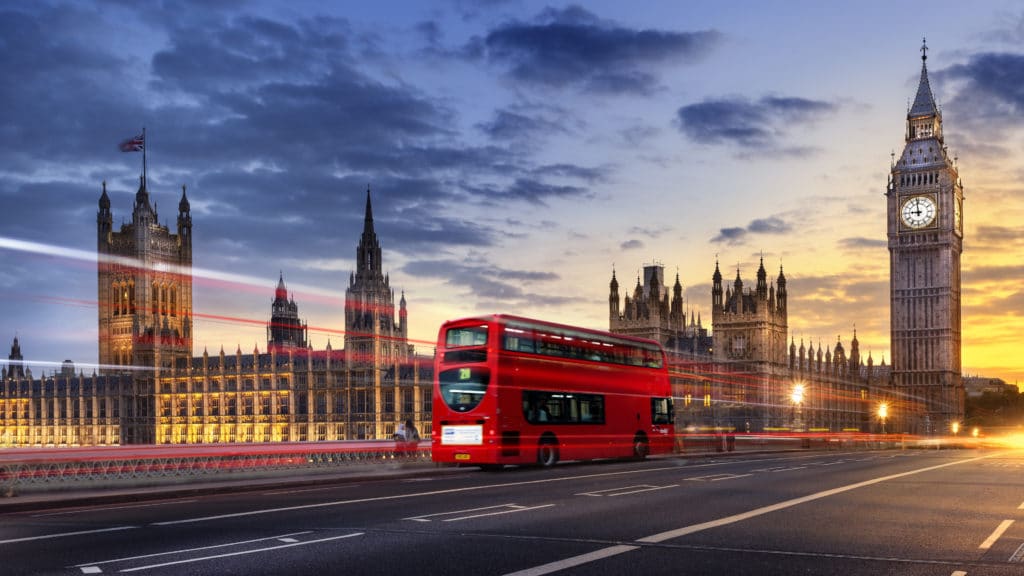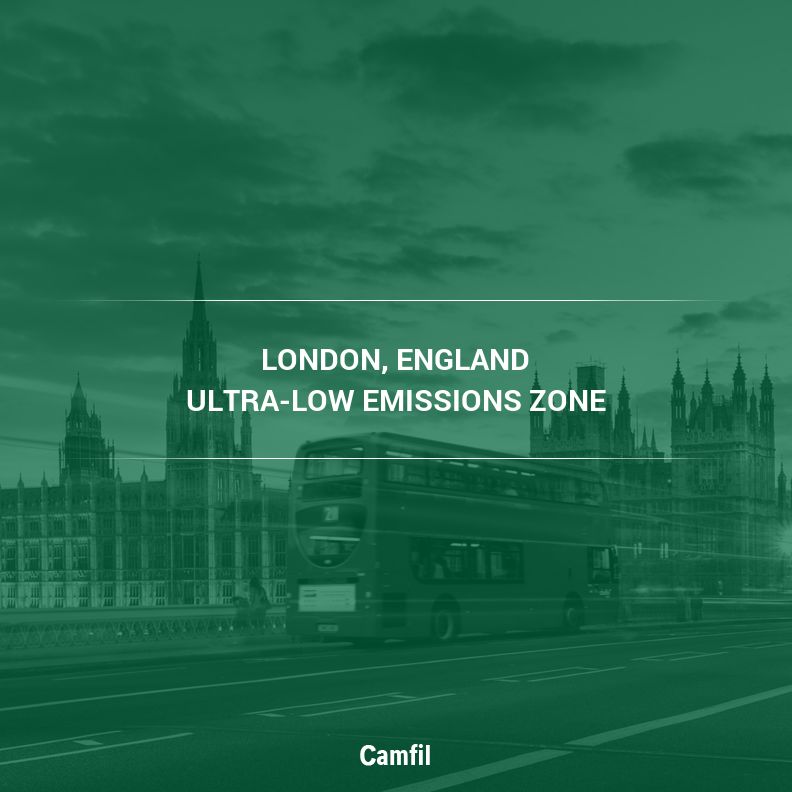Learn what London’s Ultra Low Emission Zone means for the future of outdoor/indoor air quality in cities around the world and commercial air filtration systems.
Beginning April 8, London’s new Ultra Low Emission Zone came into full effect, part of a greater effort to improve the city’s air quality and ease the burden on commercial air filtration systems. Vehicles will have to comply with strict exhaust emissions standards or pay a daily levy to drive into central London. Under the ULEZ, the cars emitting the most pollution will have to pay £12.50, while trucks and buses have to pay £100.
 That’s on top of the daily £11.50 congestion charge, a major contributor to air pollution in the city. According to data from INRIX, a traffic analytics firm, London’s car traffic may be in decline, but congestion is still high. In fact, London is the most congested city after Moscow, with drivers spending an average of 74 hours each year being stuck in traffic.
That’s on top of the daily £11.50 congestion charge, a major contributor to air pollution in the city. According to data from INRIX, a traffic analytics firm, London’s car traffic may be in decline, but congestion is still high. In fact, London is the most congested city after Moscow, with drivers spending an average of 74 hours each year being stuck in traffic.
With so many cars stuck on the road, it’s not surprising that air pollution from car exhaust continues to be a problem.
“Combustion generates H2O, NO, NO2, CO, CO2 and particulate (matter). Combustion can also emit hydrocarbon gases, vapors, and organic particles,” explained Mark Davidson, Manager of Marketing & Technical Materials for commercial air filters at Camfil USA and active committee member for ASHRAE. “Some of the particles are large and settle out of the air stream, but the majority of the particles are submicron and remain suspended in the air for long periods of time.”
How Does The ULEZ Affect Outdoor Indoor Air Quality?
The goal of the ULEZ is to encourage Londoners to move to cleaner, more efficient vehicles. Gasoline-powered cars, vans, and coaches that meet the Euro 4 emissions standard, and diesel trucks that meet Euro 6 standards, are exempt from paying the levy. By moving to cleaner vehicles and discouraging cars from entering Central London, mayor Sadiq Khan expects that the capital’s outdoor and indoor air quality, which he says is responsible for thousands of premature deaths, will improve over time.
What Does This Mean in American Cities?
Unsurprisingly, applying these kinds of levies in America, with its love of automobiles, may be easier said than done. However, change is happening in some American cities. For example, New York City recently completed a four-year renovation of Times Square, which has now been revamped into an 85,000-square-foot pedestrian plaza. New York has also proposed transforming the congested Grand Street and Bedford Avenue into car-free zones. If successful, both projects would go a long way towards improving air quality in these areas.
Los Angeles is one of the country’s cities with the highest air pollution. Homes and buildings near major roads often need to be equipped with high efficiency air filters. LA has plans in the works to re-imagine their future of transportation. City officials are setting their sights on how both shared and self-driving vehicles can be integrated onto the roadways.
LA is also using its Great Streets Program to encourage walking in the city by reinvigorating thoroughfares with pedestrian paths, plazas, and art. On the other hand, San Francisco is working on plans to ban cars and add bike lanes on Market Street, one of SF’s busiest streets.
Other fast-growing cities like Denver and Charlotte, both of which suffer from serious air pollution and particularly ozone pollution, are considering long-term initiatives that would focus on pedestrian-friendly infrastructure and multi-modal transportation over private cars.
High-Efficiency Air Filters Provide Protection
Given how much Americans love their cars, it’s not surprising that U.S. cities have been slow to take a tough stance against automotive pollution like London. The concept of banning certain diesel-powered trucks or applying levies and restrictions when entering certain parts of cities by car may simply be too unpopular with some people. Unfortunately, transportation is the fastest-growing contributor to air pollution and greenhouse gas emissions in the United States. Unless something changes, many homes, retail stores and commercial office buildings in high traffic areas may need to install high efficiency air filters to protect those inside from breathing air polluted with the emissions from too many vehicles.
Choose Air Filters from Trusted Air Filter Manufacturers
When choosing air filters for industrial or commercial use, it’s important to work with experienced air filter manufacturers who consider all the variables when determining the proper air filtration solution for the facility or individual room. To learn more about the importance of commercial air filtration systems and the role they play in maintaining clean indoor air quality, get in touch with Camfil USA.
Your local Camfil location will have filtration experts to help you decide which industrial air filter is best for your contaminant needs.
https://www.camfil.us/Filter-Technology/Indoor-Air-Quality-IAQ/Sources/Combustion-by-products/
The post What will the ultra-low emissions zone mean for London and the cities of the future? appeared first on Air Filters for Clean Air.

